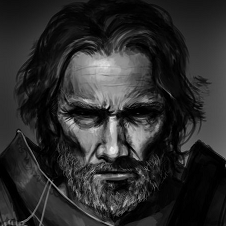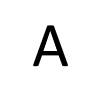-
Posts
38,420 -
Joined
-
Last visited
Content Type
Profiles
Forums
Events
Gallery
Everything posted by Ace-Garageguy
-
This has been a packaging nightmare, but everything is looking like it will fit at this point. The headlights will still mount to the tops of the front rails, and there's just enough room to get a tie-rod in front of them for steering. Steering input, by the way, will be from a left-side cowl pitman arm. The upper control (A) arm visible in this view is larger diameter tube than the final part will be...it's a mockup to check the fit. Also, the black part of the suspension between the rails will disappear. I've redesigned the way the torsion bars anchor to the frame, so there won't have to be anything in front of the signature '34 grille, except the steering tie-rod. You get an idea of how tight everything is in this shot.....You can see how the upper A-arm really points forward at an extreme angle, but it COULD work if all the support structure and the arms themselves were very, very rigid....say, like carbon fiber. Again, this will be the trunk. There will be a full hood, with sides that conceal the frame rails and most of the lower arms and torsion bars. All the frame and suspension fab work is intended to try to keep the nose this clean, with full hood side panels...
-
I'm about 98% sure I haven't posted this one on here before...started the build in 2010, have been tinkering with engineering issues off and on since then. I've figured out a couple of things (in the process of working out a way to use Porsche 911 front suspension under a real rod), so she's come back out again to play. Radical lowering job is evident, but like with all of my builds, I want to give it enough ground clearance to work if built full scale, and enough engineering correctness to be feasible in reality. I started out thinking Chebby 409 power, with trick chain transfer-case style hubs in the rear to get the chunk low enough to keep a flat bed floor. Nah...too lame. Had a 512 BB engine / gearbox lying around, and it fits in the bed. The Ferrari drive axles come out at the right location to actually work on this setup. And the engine bay in front can be the new trunk......plenty of luggage space for two to go to VLV... Started with the '34 AMT 3-window frame, which is awful. I was going to use it for a race car, but it's too awful even for that. So, I added material to the top of the rails to deepen them, then Zeeed the front to carry the new IFS, and Zeeed and arched the rear rails to go up and over the axle and carry the Ferrari Boxer motor closer to the ground. Also added all new tubular crossmembers and an .030 styrene floor panel Still needs left rail matched, filling and finishing, but you get the drift.... The extreme lowness coupled with the silly-tall tires, and my desire to have no axle in front of the grille has made the build a little more-than-usually challenging. In the rear, I've made up a transverse torsion-bar setup, with the trailing arms made from Little Gasser parts, and the chain-drive transfer hubs made from parts box something-or-others. The disc-brake hubs are Ferrari, with parking brake calipers too. All of this could work....at least enough to get itself on and off a trailer.....Actually, the rear suspension is almost identical in concept to old VW bus practice, but with chain-drive hubs to get it down, rather than gear-reduction hubs to get it up. Front suspenders are based on Porsche 911 geometry and torsion bars... In the front, I've made up some new crossmembers, stretched the front rails a bit, added gusseted brackets to mount the rear of the torsion-bars, and added a little more structure to carry an upper A-arm. The front hubs are also Ferrari, and mount to the Porsche lower control arms (reversed) like the original parts. There is no room for the Porsche strut though, so I'm making up an upper A-arm to do the same job. It has to mount to something in space to carry the loads, so tubular members are going to do that.
-
Whatever they decide to do, it's good to see Revell taking a leap, believing that contemporary (more or less) showcars are of sufficient interest to the model-buying masses to even consider 2 new-tool kits. Yahoo. I'd personally prefer to see two of Foose's original designs released as new-tools because...well, with some work, the production-vehicle-based cars can be replicated without TOO much difficulty by a skilled modeler from existing bits, but the original designs would have to be entirely modeler-scratch-built. I vote for the Hemisfear and the Impression (the Impression is not a production-car based design...everything on it, with the exception of the engine, gearbox and diff center section, was designed and built specifically for the car). The Impression is also even more special, having won both the Ridler and the AMBR (America's Most Beautiful Roadster).
-

Re-issued or new tooling? Flintstones
Ace-Garageguy replied to Drago's topic in Car Kit News & Reviews
Numbers are hard, the Chinese don't use our measuring system, the Chinese have never actually seen a REAL Flintstone's vehicle, the budget just wasn't there to get the scale right, there were communication problems, and the deadline didn't allow for getting the correct scale on the box. Same old, same old. -
Reminds me of older British cars. You'd think that being built in an area of the planet that was so wet that everything was mostly covered in moss, the tops wouldn't leak and they'd start in the rain. Well...not necessarily.
-
"Hi. My name is Tom, and I'm a philatelist".
-

Aston Martin DB4 kit?
Ace-Garageguy replied to dawgvet's topic in Model Building Questions and Answers
Kinda makes you wonder how long this "well, our Chinese toolmakers have never seen a real one, and nobody here knows how to measure and transmit accurate data anymore, so we just do the pathetic best we can what with all the communication problems, cash constraints and deadlines" BS has really been going on. -
Ummmm...maybe a more efficient approach to the problem would be to just let them have it. Take them out of the gene pool quicker, ya' know?
-
Surely you jest, sir. If not, Dog help us.
-
I think I have about 60 going...they'll make it to the bench for a couple of days, then go back on the shelf while another one gets its turn...
-
OMG !!! I HOPE you got your new phones UNDERCOATED !!! OMG !!! OMG!!!
-
Nice there's not much graffiti, but what's happened to everybody? Seems like when I was a kid, paint was pretty much for painting stuff. Why do sheeple-followers of idiot vandalizers even exist? Why is it necessary to put your pathetic, meaningless little mark all over everything? What makes it "cool" to spray stupid scrawls everywhere? Learn a freakin' skill, people. Learn to DO something...instead of marking up other people's stuff.
-
Reminds me of the prisoners not being allowed toilet paper in the Alice's Restaurant bit...so they couldn't roll it out the window, slide down it and "have a es-cape".
-

Decent manifold for Amt's new stacks
Ace-Garageguy replied to scalemodeler's topic in Model Building Questions and Answers
Port spacing AND head-spacing and angle between heads. Fords (except Y-blocks) have evenly spaced intake ports...plus different water / thermostat and distributor locations...and whether the engine normally uses a separate valley cover and water crossover (like Buick)... It makes a difference, if you want a non-dorky look to your engine, anyway. -

Decent manifold for Amt's new stacks
Ace-Garageguy replied to scalemodeler's topic in Model Building Questions and Answers
Seems I recall the old AMT '55 Chebby Nomad had an acceptable SBC / Hilborn manifold, too. The Revell Anglia / Thames kits have separate Hilborn-style manifolds with port spacing that would work for the SBC, but would require a separate valley cover and water neck. There are also several resin versions out there...these are from Speed City... -
So, once again, the lowest-common-denominator retards ruin it for everyone else...
-

Aston Martin DB4 kit?
Ace-Garageguy replied to dawgvet's topic in Model Building Questions and Answers
Really a shame the old Aurora scaling and proportions were so bad on all of these kits. When I got back into modeling in '05 or so, I bought several of all of them, based on the beautiful box-art paintings. If only the parts in the box looked like the paintings. At this point, they're all on the shelf, waiting for me to figure out what to do with them. They're honestly almost as bad as Palmer stuff, being only fair impressions of the actual cars. Again, what a shame, because a lot of effort went into doing all the little parts and opening bits. If only someone with talent had done the body tooling... -

What causes warped Bodies
Ace-Garageguy replied to slusher's topic in Model Building Questions and Answers
100% demolding too soon, still too hot, above its "glass transition temperature (Tg)". Styrene that's over about 100 C (212 F) will NOT support itself, and will warp and droop in any direction it's stressed in. Trying to cycle the equipment too fast to increase production and raise profits by a minuscule amount is a possible culprit, or the techs just not paying attention to the temps. A change in formulation of the styrene used during a run could also be the cause, because not ALL styrene formulations have exactly the same Tg . To UN-warp it permanently (IF the warp is the result of being demolded hot) you'll have to get it up past its Tg again. -
Like I said, a whole lotta stupid around...
-
"At the paint rack. Why?" Cause there's a whole lotta stupid around, that's why...stupid with zero respect for other people's property, rights, or just knowing how to act like a human being.
-
Looking really good. I like the big 'ol pre-'58 Buicks, and of course there's nothing available in 1:25 styrene. Nice work.
